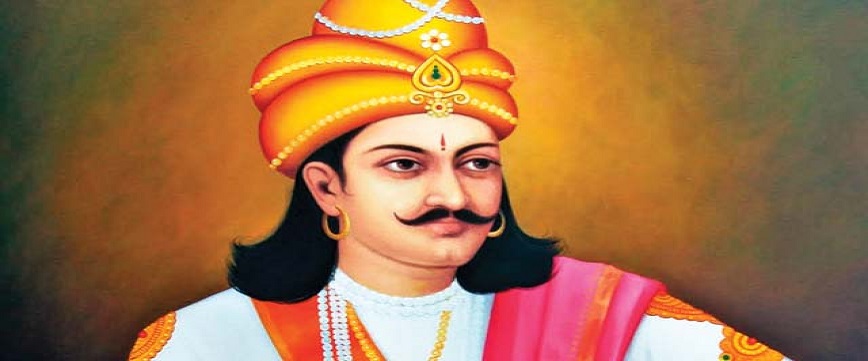
Ashoka was the grandson of the founder and the first ruler of The Mauryan Dynasty, Chandragupta Maurya. You may know him better as Father of Ashoka, Bindusara, and Mother Subhadrangi who were blessed with a son in 304 BCE in Pataliputra present-day Patna. He was named Ashoka which means “A-shoka” or ‘one without sorrow’ in Sanskrit.
Ashoka's birth year is not actually recorded according to the present-day calculations, but he mentions his own inscriptions of rulers of the period whose years of birth are recorded.
While Ashoka might not have been the strongest guy in the kingdom, King Bindusara trusted him with a lot of responsibilities and gave him the chance to help his own son, Emperor Bharata IV, during one of his rebellions. However, by knowing who would succeed him as heir and what kind of future they could provide, he was able to make a decision in his lifetime.
Ashoka had five children--three sons, Mahinda, Tivala, and Kunala, and two daughters, Charumathi and Sangamitra. Mahendra was the firstborn and oldest son of Ashoka; he was very involved in his Father’s mission. Son-in-law of Ashoka, Mahinda was sent to Ceylon for his mission.
Ashoka Reign
Ashoka's father, Bindusara, reigned the Mauryan empire for 28 years. After his death in the 270s BCE, there was struggle and concern as to who among his sons would be his successor. At first, Ashoka seemed to step up to take the throne of the Mauryan empire in 269-268 BCE.
Asoka was a man of ambition, making him a good fit for being a monarch. He mastered his responsibilities and waged many successful conquests when he sat on the throne. In this role, Ashoka possessed many skills: experience as a commander; perseverance in suppressing rebellions; determination to reassert power in his empire following their success.
The Mauryan Empire was once again growing stronger due to these leadership qualities. All in all, Asoka is admired as one of the most influential Indian kings before Akbar and also known as Ashoka Chakravarthy or simply Ashoka King of Kings.
Many texts that originate from Sri Lanka or North India refer to Ashoka as a violent king called Chandashoka. Ashoka was known for beheading his ministers after they failed to bring every tree that had fruits and flowers. The name, Chand ashoka, truly illustrates the character of this brutal emperor.
Check out all the facts about the life of your favorite personalities.
Find the best biographies of all time. Click here to know more about Prithvi Raj Chauhan- Biography, History, Wars, Achievement & Nana Saheb Peshwa Biography, Images, History, Facts, Family, Death.
The Kalinga War and Its Aftermath
One of Ashoka's most impactful and pivotal moments came when he waged war on Kalinga. It was the first of many wars he waged, but also the one with the most casualties. It was also the most disastrous and destructive war to date, killing 100,000-150,000 people. Despite his success in conquering Kalinga, Ashoka could not fathom this level of destruction. He saw it firsthand and continued to feel regret days after his victory.
History books are full of great stories. This is one of those stories. Here, Buddhism was explored during a time of suffering and violence, which changed Ashoka dramatically. His practice of 'ahimsa' preaches non-violence to any other living being, with hunting animals banned as the emphasis was placed on following dharma's path by not injuring animals in any way.
The dharma, a preached word by spiritual and philosophical texts of Buddhism, is the ultimate universal truth applied to all individuals at all times. The Buddha, who took from his learnings in order to document them in the pillars, an arrangement of religious texts, and so became the authority or one in power. Today, the pillars are called the Ashoka Pillar and the lion capital has become the national symbol of India. His edicts are well-kept records that rung and rang true to be frank and sincere.
He set a life of honesty, compassion, and mercy. His interactions with others were now based on peaceful and loving ways. Rather than violence, he chose to speak to those who practiced the same philosophy as him.
Civil servants are meant to be public servants and Ashoka became a man who understood this. He ordered his ministers and other administrators to perform the same as well. Even though his sons were not spared, Mahinda travelled extensively throughout the nation and outside for Buddhist missions. None of his sons was the successor, but Tivala Maurya passed away before he could rule, and Kunala was blinded so he wasn't considered a suitable successor either.
Ashoka's reign is one that impacted Buddhism in India for 37 years, it transitioned after his 8th year when he attacked Kalinga, which is where he felt obligated to spread Buddhism. His reign name is Priyadasi which means "one who regards amicably."
Death of Ashoka the Great
Ashoka in his final years was not well and died in his 37th year of reign at the age of 72 in Pataliputra, a city that now bears his name. He donated a lot of money and did so much philanthropic work for Buddhists. The king had made it clear that he wanted Mahinda, his eldest son and preceptor, to be crowned king, but he declined because he wanted to follow the path of Buddhism and monastery life. At the age of not more than 15 years old, Dasharatha Maurya became successor instead.
Conclusion
Ashoka was an influential leader and a renowned philosopher. He established Buddhism as a world religion. During his rule he inspired powerful leaders, such as Confucius, and Mencius by way of his social reformations in governance, religious tolerance, economics, and education.
Check out all the best biographies of all time click here to find the most credible information about Mary Kom- Biography, Career, Olympics, Images, Kids & Bhagat Singh biography images history Jayanti, facts and Death.
For more information visit: Samrat Ashoka Biography